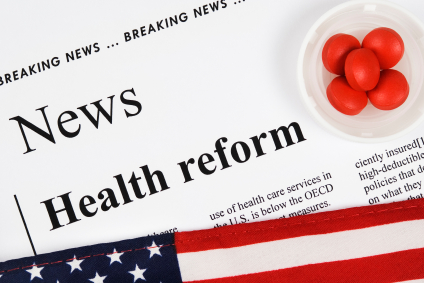
President Trump announced on July 5 that he is planning to release an Executive Order that would enact a “most favored nation” requirement for prescription drug manufacturers. It was not immediately clear how this Executive Order would differ from the International Pricing Index proposal for Medicare that is currently under review with the Office of Management and Budget (OMB), and is expected to be released next month.
A “most favored nation” requirement generally requires a manufacturer to sell goods to one party at the lowest price offered to another party. The Medicaid program already uses a type of “most favored nation” requirement. Manufacturers are required to sell prescription drugs to Medicaid programs at the lower of: the “best price” offered to other customers, with several notable exceptions, or a 23.1% discount off of the average manufacturer’s price (AMP) (generic manufacturers are required to sell at “best price” or AMP less 17.1%).
The President’s announcement comes while the Administration appears to be readying the release of a formal proposal that would recalibrate the methodology used to determine Medicare payments for physician-administered drugs. In October 2018, the Administration released an Advance Notice of Proposed Rulemaking (ANPRM) that broadly outlined a demonstration that would use a blend of average sales price (ASP) and an international pricing index (IPI) to calculate Medicare payment for drugs covered under Part B. This came the same day that the Assistant Secretary for Planning and Education (ASPE) released a comparison of the U.S. and international prices for the most common drugs covered under the Part B benefit and found that the average price for drugs sold in the U.S. was 1.8 times higher than ex-U.S. prices.
Would a “Most Favored Nation” Mandate Work?
Without a formal announcement, it is difficult to speculate too much, but there are several structural differences between the U.S. and ex-U.S. markets that immediately come to mind when considering the potential impact of such a policy shift:
Foreign countries can extract lower prices than the U.S. because their health systems are willing to not cover drugs, or they can negotiate as a single entity. As any successful negotiator knows, there are two important keys to negotiating success: the size of the entities that are negotiating and the ability of either party to walk away from the table. The Veterans’ Affairs system, widely touted as a model of success at negotiating low prices, also covers many fewer drugs than the average Medicare Part D formulary (note: while the rumored Executive Order would apply to Part B drugs, the same economic principles apply). Other countries leverage their national health systems to extract lower prices, either based on an evaluation of clinical value or on multi-year pricing agreements. While the Medicare program, and its 60 million beneficiaries, is certainly a sizeable negotiating block, current law requires Medicare to cover almost all physician-administered drugs. Beyond legal requirements, it also isn’t clear that Americans would be willing to sacrifice access for lower costs.
“Past Performance is No Guarantee of Future Results.” As mentioned earlier, a version of “most favored nation” pricing has been in effect for the Medicaid program since 1992. There are analyses that indicate that after implementation of the rebate, highly-organized entities like the Veterans’ Affairs Department and Department of Defense, and large group health maintenance (HMO) organizations and hospitals, saw costs rise since manufacturers were unwilling to extend the low prices they had been negotiating to the Medicaid program (subsequently, Congress exempted both the VA and DoD from ‘best price’ negotiations, meaning that prices negotiated by those entities are no longer included in calculations). There is also academic research suggesting that the “best price” rebate has actually led to higher-than-expected prices for drugs for all consumers, not just the Medicaid program.
A policy that ties Medicare payment rates to the prices negotiated by other countries relies on the ability of those counties to continue to negotiate sub-U.S. pricing into the future to be successful. But those prices were negotiated in the past, under a completely different set of circumstances, namely that manufacturers knew they didn’t need to extend those prices to the U.S. market as well. And the economic rule that what happened in the past cannot be relied upon to continue happening in the future is so ironclad that the Securities and Exchange Commission requires financial services firms to include a disclaimer saying as much on all mutual fund marketing materials.
Also, Congress. The methodology for determining Medicare payment for prescription drugs covered under Part B is clearly outlined in statute. And Sen. Charles Grassley (R-IA) has already come out against the international pricing index outlined in 2018. While this could be an issue where the President and Democrats in the House find common ground, the Senate could still make problems for the White House.
Drug pricing has been one of President Trump’s top issues since taking office in 2017, and to his credit, his administration has been willing to step outside of what has been considered traditional Republican orthodoxy in his approach. But we will have to wait for more details to see if this international pricing effort will have an impact.


